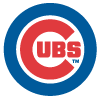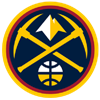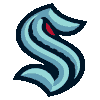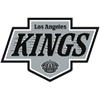I first sensed it at the October First Pitch Forum after moderating a session on drafting in deep leagues. We talked about the NFBC Draft and Hold (5x5) and Cutline (Best Ball) formats. Best ball dominated the audience questions as well as the chatter after the panel ended.
Credit to the fine folks at Razzball, as they were prescient and set up RazzSlam ahead of the 2020 season. RazzSlam is an industry-wide best ball tournament, marrying the NFBC Cutline and The Great Fantasy Baseball Invitational.
I believe in the old fantasy baseball axiom, "No one cares about your fantasy team but you." I also feel if the team is presented properly, relevant information can be gleaned from the process. So yes, I am going to share my #RazzSlam roster.
Before doing so, let's talk a bit about Points Leagues in general. At least 75 percent of fantasy leagues are head-to-head, with most of those using points scoring. Clearly, among RotoWire subscribers that percentage is far less, but I've spoken to ESPN, Yahoo and CBS, and they all report an overwhelming majority of their audience are in points leagues. To put it in perspective, for every high stakes player, there are at least 1000 that don't participate in that area. High stakes players number in the thousands, whereas there are millions playing fantasy baseball.
Coverage of points leagues pales in comparison to rotisserie formats, though. This raises the question, "Why isn't there more industry focus on points leagues?"
There are
I first sensed it at the October First Pitch Forum after moderating a session on drafting in deep leagues. We talked about the NFBC Draft and Hold (5x5) and Cutline (Best Ball) formats. Best ball dominated the audience questions as well as the chatter after the panel ended.
Credit to the fine folks at Razzball, as they were prescient and set up RazzSlam ahead of the 2020 season. RazzSlam is an industry-wide best ball tournament, marrying the NFBC Cutline and The Great Fantasy Baseball Invitational.
I believe in the old fantasy baseball axiom, "No one cares about your fantasy team but you." I also feel if the team is presented properly, relevant information can be gleaned from the process. So yes, I am going to share my #RazzSlam roster.
Before doing so, let's talk a bit about Points Leagues in general. At least 75 percent of fantasy leagues are head-to-head, with most of those using points scoring. Clearly, among RotoWire subscribers that percentage is far less, but I've spoken to ESPN, Yahoo and CBS, and they all report an overwhelming majority of their audience are in points leagues. To put it in perspective, for every high stakes player, there are at least 1000 that don't participate in that area. High stakes players number in the thousands, whereas there are millions playing fantasy baseball.
Coverage of points leagues pales in comparison to rotisserie formats, though. This raises the question, "Why isn't there more industry focus on points leagues?"
There are several reasons, the first of which is the bulk of the industry is naïve to the number of people playing in points leagues. Most have been weaned on rotisserie scoring and perhaps even frown upon points leagues. Another is that while 75 percent of those playing fantasy baseball may play points formats, the ratio of those seeking advice, especially those willing to pay for it, tilts more toward rotisserie scoring.
The lack of a universal scoring system is also a major hindrance, especially for player analysis. ESPN, Yahoo, CBS, NFBC, Fantrax and RTS scoring formats are all different. There are also several smaller sites offering points leagues with unique scoring. For example, strikeouts, walks and stolen bases all carry different weights for batters, so players well above or below average in these areas will have disparate rankings.
The final reason is, points are points. The changing nature of the player pool from year to year does not offer the strategical conundrums of balancing categories in 5x5. It doesn't matter if steals are more scarce. The closer vortex doesn't exist in points leagues. Sure, the relative nature of hitters to pitchers changes each season, but it can be handled mathematically via the commonality of points on each side.
Thus, the rare essay on points leagues is essentially evergreen; the general approach is the same every season. To that end, instead of rehashing the work I have already done on points leagues, below are links to pieces addressing all elements of points league strategy, ranking and drafting. Everything you need to know about points league should be covered and as always, hit me up with any questions below.
- Best Ball Fever - February 12, 2021
- Tips for Best Ball Leagues - April 11, 2020
- Strategy for Points Leagues - February 14, 2019
- Points League Pointers - February 23, 2018
Let's shift gears to my 2022 RazzSlam entry. There 12 teams per league (two more than the NFBC Cutline). The active roster has the standard 23 spots with 14 active batters and nine active pitchers. The total roster is 42 spots. There are two FAB periods, one just after the season begins and the second in June. The software is programmed to recognize multi-position eligibility and determine the highest scoring lineup. Please note, some sites assign one position per player, ignoring the advantages of multiple position eligibility.
My plan for positions is:
- Catchers: 4
- 1B/2B/3B/SS: 3 each
- Outfielders: 9
- Pitchers: 17
That's exactly 42. The caveat is if a player is eligible at more than one spot, he gets counted at each position. As such, Fernando Tatis counts at both shortstop and outfield, so if I draft him, I need only two more shortstops and eight more outfielders While I am not against drafting a UT-only player, a huge discount is needed.
Every multiple eligibility player drafted frees up a wild-card pick. This is usually used at pitcher or outfielder. Occasionally it will be used to fortify the weakest infield spot.
Speaking of which, while the available inventory affects the choice, I generally look to back up the infield position I drafted last. In fact, a viable approach is identifying the deepest position in terms of quantity, waiting to address it, then attacking it with volume, hoping one guy each week produces at a solid level.
I am 100 percent Team Catcher in this format, for two reasons. The first is math. In shallow, two-catcher leagues, the replacement bump is huge. Additionally, from a game theory perspective, I want to lock in big points from what I consider a top-producing backstop and not rely on a cruddy dude to luck into a productive week. That said, I may wait on my second catcher. Hoping for one of three to have a good week is a safer play than two of four.
An area I often differ from the field is with closers. It's best to embrace volatility in best ball. I have 17 pitchers (fewer once injuries kick in). Still, it's a volume approach. Some weeks, closers register a goose egg; in others they collect multiple saves, scoring huge that week. I don't want one or two closers, since there will be weeks neither notch a save. My preference is five or six closers, so the odds favor two or three recording at least one save, with the possibility of more in any scoring period. Many rooms avoid closers, feeding right into my approach.
Another means of embracing volatility is to exploit splits. Batters in good hitting venues should excel when they play six or seven games at home. Lefty swingers should post better numbers when they're slated to face six right-handed starters.
The same goes for pitching. Starters in good pitching venues are favored, as are those in weak divisions to improve their odds of grabbing a win.
Early on, it doesn't matter who you take; a good player is a good player. Once the draft is in the backup stage, throw rankings out the window. I don't care about the projection for Ryan McMahon outside of Coors Field, or Anthony DeSclafani on the road. I want McMahon for Coors games and DeSclafani for home starts. Overall rankings are dragged down by the stuff about which I do not care.
With that as a backdrop, here is my squad, with the focus on why, not who.
1.06 Jose Ramirez 3B: The NFBC points system is designed so the rankings mimic 5x5 (I know, because I was consulted on the setup). As such, third base has some quality up top, but falls off quickly and is not deep. The backups will be stinky (it's an industry term), so being able to address the position with one of the best players in the league is wicked pissah (a Boston term).
2.19 Ozzie Albies 2B: As suggested earlier, I like to pound on deep positions with volume and usually handle the keystone in that manner. However, I couldn't let Albies slide any further. This also frees up a later pick or two as a backup at another position.
3.30 Will Smith C: Team Catcher! Salvador Perez went 17th, so I knew at least someone in the room was tuned into the catcher bump. To be honest, I didn't expect Smith would be available, but since he was, it told me the rest of the room wasn't applying the proper replacement tax. It obviously wasn't enough to wait another round, but it did indicate I didn't have to spend an early pick on my second catcher since as a whole, they'll likely fall.
4.43 Paul Goldschmidt 1B: There is a limit to embracing volatility. Admittedly, this is my general modus operandi, but safe early, risky later is the plan and I prefer Goldschmidt over someone like Matt Olson, who was drafted a round earlier.
5.54 Javier Baez 2B/SS: So much for safe. I wanted a shortstop or outfielder here since really good pitching was still available. The next pick was Whit Merrifield (2B/OF), with Corey Seager (SS) and Jesse Winker (OF) soon thereafter. Baez was by far the top player on my board. I may end up regretting the pick since I feel Seager will do fine in Texas, but my gut says Baez will run with the Tigers. We'll see.
6.67 Aaron Nola P: Catcher and infield covered, so it's time for a pitcher or fly-chaser. Outfield is not as deep as normal, but it's a 12-team league and there's an early FAB, so fading outfield to some extent is a viable tactic. Not to mention, Nola fell too far, even in this format.
7.78 Jose Berrios P: Quite simply, I have Berrios ranked higher than the available outfielders, so let's put it off at least another round.
8.91 Hunter Renfroe OF: Yeah, I'm going to need to attack outfield with volume.
9.102 Josh Bell 1B: Position coverage is important, but Bell was by far my highest ranked player and...
10.113 Lourdes Gurriel OF: Gurriel was my highest ranked outfielder and I sensed I could get both Bell and Gurriel. Fortunately, I won this game of ADP chicken.
11.126 Emmanuel Clase P: See, I told you closers fall. Clase was the fifth closer off the board (the next two picks were Edwin Diaz and Aroldis Chapman). Finding the requisite (for me) four or five more stable closers will be a chore, but I like my chances in a FAB league.
12.137 Sean Manaea P: Manaea checks the excellent home field box, though as my SP3, he better be one of my best nine arms most of the time.
13.150 Avisail Garcia OF: Here is another instance of ADP chicken. I need to start pounding away at closers but saw this as my last chance to get a decent outfielder before the next break in tiers, and I sensed the closers would continue to slide.
14.161 Will Smith P: Phew. Two down, three or four to go.
15.174 Kenley Jansen P: He's going to close wherever he signs, right?
16.185 Christian Vazquez C: I love the volume as Vazquez has been one of the busiest backstops over the past few seasons, plus he checks the home field box. In order to take full advantage though, I'll need another decent receiver to slide into the active roster when Boston is on a road trip.
17.198 Kolten Wong 2B: I would have preferred an outfielder, but akin to Bell earlier, Wong was on top of my board with no one else close, and there is still MI and UT available to fill.
We're at the point where it's just filling in the outfield and pitchers, so I'll present the squad as a whole by position with a few observations at the end. The number in parenthesis by the position is the number of eligible players while the round is included with the players.
- C (4) : Smith (3), Vazquez (16), Alfaro (28), Jeffers (34)
- 1B (3): Goldschmidt (4), Bell (9), Tsutsugo (27)
- 3B (3): Ramirez (1), Suarez (19), Wendle (24)
- 2B (3): Albies (2), Baez (5), Wong (17)
- SS (3): Baez (5), Suarez (19), Wendle (24)
- OF (10): Renfroe (8), L. Gurriel (10), Av. Garcia (13), Canha (18), Yastrzemski (20), Joe (25), Tsutsugo (27), K. Calhoun (29), De La Cruz (33), Robles (42)
- SP (12): Nola (6), Berrios (7), Manaea (12), Ober (21), Gonzales (23), Taillon (26), Dunning (30), Bundy (32), Fedde (35), Manning (38), Hearn (39), Lyles (40)
- RP (8): Clase (11), W. Smith (14), Jansen (15), Kimbrel (22), Kittredge (31), McGee (36), Alcala (37), Wells (41)
The four multiple eligibility guys (Baez, Wendle, Suarez and Tsutsugo) cleared four wild cards, three of which were used at pitcher with one in the outfield. No doubt, a couple of the closer darts will prove futile, so I figure I can replace them and still have pitching covered. Alfaro is technically OF eligible, but I don't expect him to ever land there, so I didn't include him in the math.
I don't love the third base or shortstop depth, but to be honest, unless you're willing to go light with pitching, infield depth will be weak. This is a second place is first loser format, so I need Ramirez and Baez to come through. If they get hurt or struggle, my club is in a hole, so my thinking was to assume they do what they're supposed to do, and fortify outfield and pitching instead. That said, I'll track shortstop closely for some depth at the first FAB.
If this format is appealing, check out the NFBC Cutline. I approach those the same as RazzSlam, but with only 10 teams, the infield depth is much better.






































